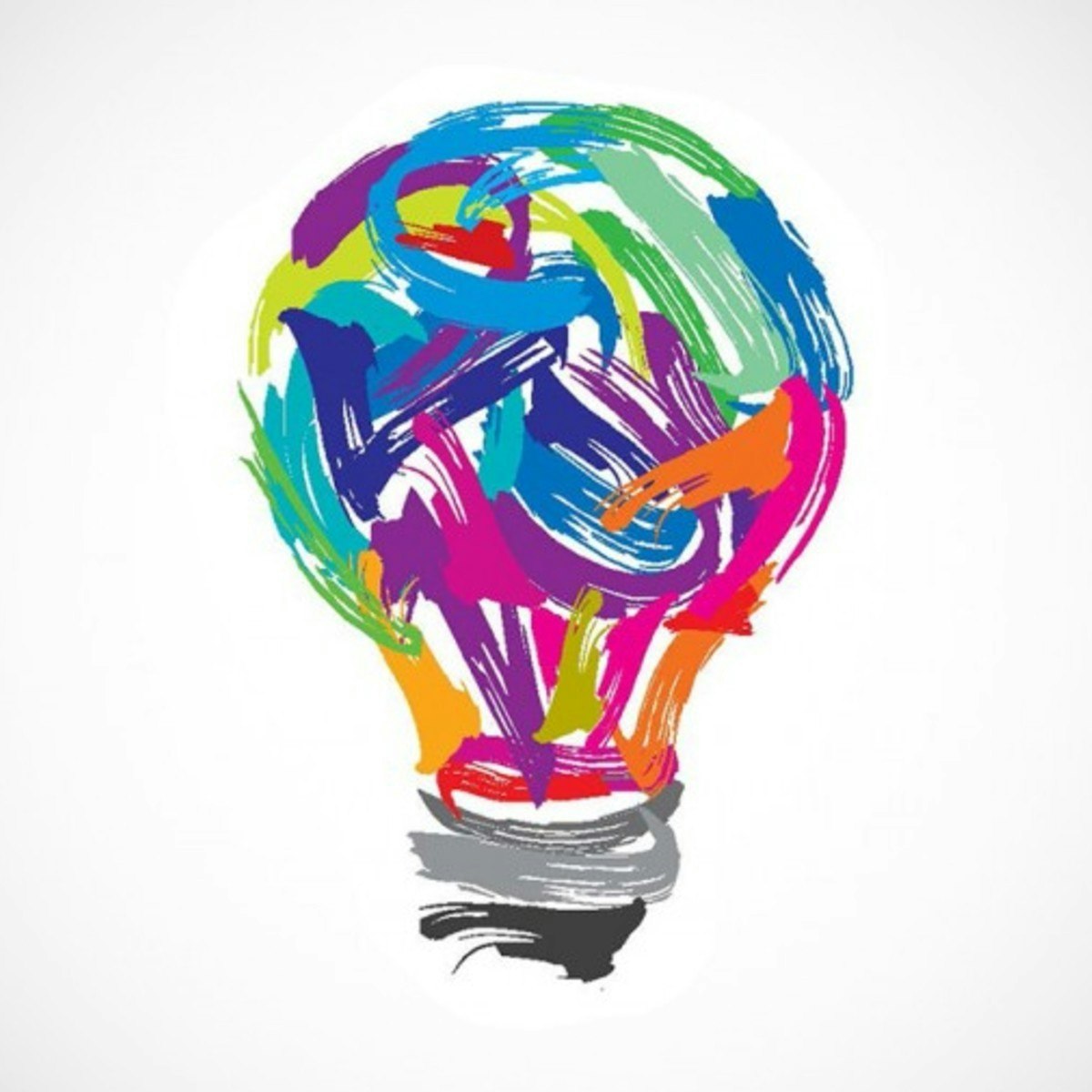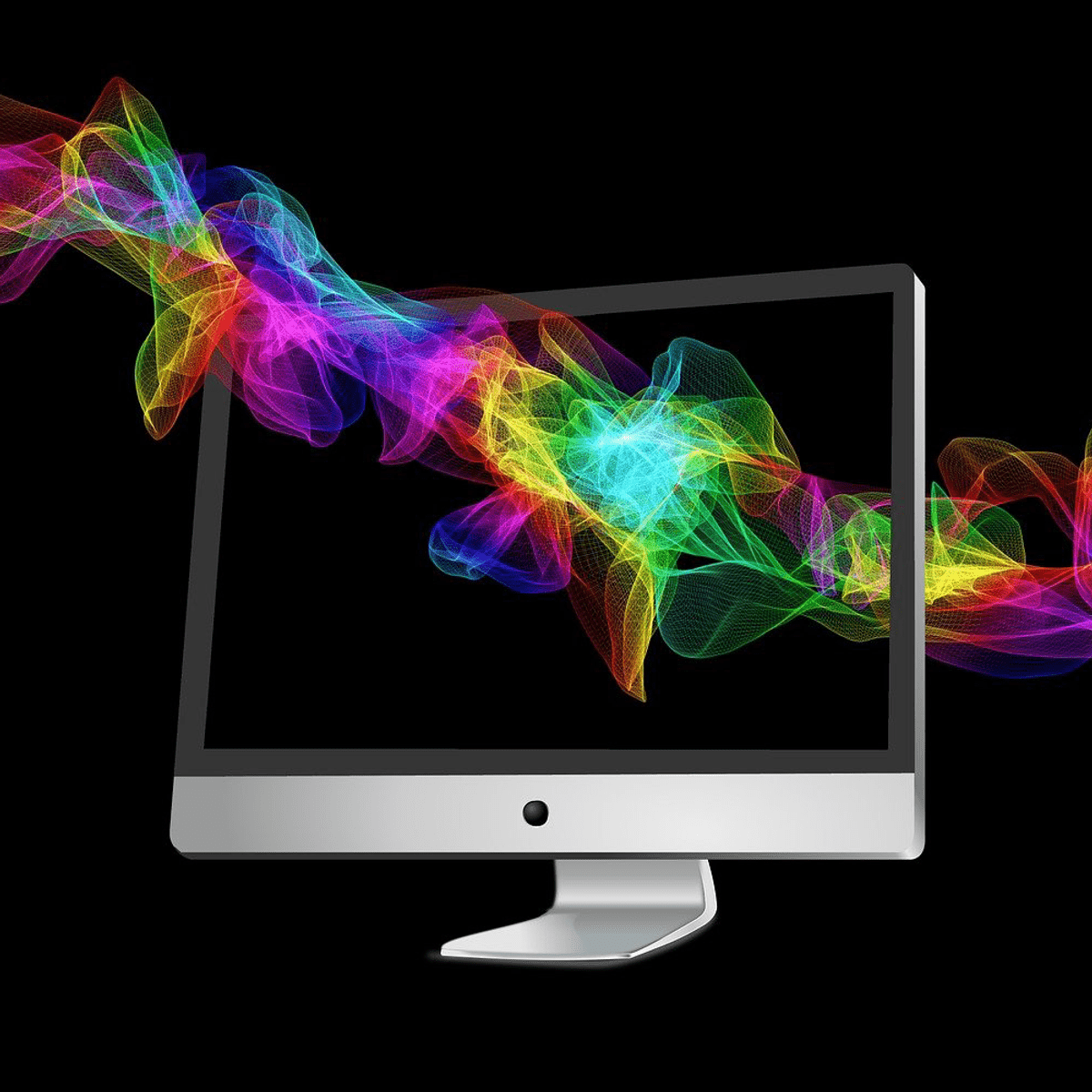Design Thinking
Unlocking Innovation: A Comprehensive Guide to Design Thinking
Design Thinking is a powerful, human-centered approach to problem-solving and innovation. It's a mindset and a methodology that encourages observing and understanding people's needs to create solutions that are not only functional but also desirable and viable. While its principles can be traced back further, it gained significant traction in the business world through the work of design firms like IDEO and institutions such as Stanford's d.school. This approach moves beyond traditional problem-solving by focusing on the end-user's experience, fostering creativity, and embracing an iterative process of ideation, prototyping, and testing.
What many find engaging about Design Thinking is its applicability across a vast range of fields, from product development and service design to business strategy and social innovation. It offers a structured yet flexible path to tackle complex, often ill-defined challenges, sometimes referred to as "wicked problems." The collaborative nature of Design Thinking, often bringing together multidisciplinary teams, can be an exciting environment for generating novel ideas and practical solutions. Furthermore, the emphasis on empathy and understanding user needs deeply can lead to the creation of truly impactful and meaningful outcomes.
Introduction to Design Thinking
This section will lay the groundwork for understanding what Design Thinking is, how it came to be, its core tenets, and its role in fostering innovation. We will also address some common misunderstandings about this approach.
Defining Design Thinking and Tracing Its Roots
At its core, Design Thinking is a non-linear, iterative process that teams use to understand users, challenge assumptions, redefine problems, and create innovative solutions to prototype and test. It is a human-centered methodology, meaning it starts with a deep understanding of the people for whom a product, service, or experience is being designed. The focus is not just on what is technically feasible or economically viable, but also on what is desirable from a human perspective.
The historical origins of Design Thinking are somewhat diffuse, with roots in the study of design cognition and design methods dating back to the 1950s and 1960s. Thinkers like Herbert A. Simon, in his 1969 book "The Sciences of the Artificial," introduced concepts like design as a 'way of thinking' and highlighted principles such as rapid prototyping and observation, which are central to modern Design Thinking. Concurrently, in Scandinavia, a more participatory approach to design began to emerge, involving users directly in the design process through mock-ups and scenarios. Over the decades, these ideas coalesced and were further developed and popularized by design consultancies like IDEO and academic institutions, notably Stanford University's Hasso Plattner Institute of Design (the d.school). Richard Buchanan's 1992 article, "Wicked Problems in Design Thinking," further cemented its role in addressing complex, multifaceted issues.
Today, Design Thinking is recognized not just as a toolkit for designers but as a strategic approach applicable across numerous industries and functions. It's a way of thinking and working that blends analytical thought with creative intuition to generate impactful solutions. For those new to the concept, OpenCourser offers a wide array of Design courses that can provide a structured introduction to these ideas and practices.
Essential Qualities of Design Thinking
Design Thinking is characterized by several key qualities that distinguish it from other problem-solving methodologies. First and foremost is its human-centeredness. This means that the process always begins with developing empathy for the target users—understanding their needs, motivations, frustrations, and aspirations. This deep user understanding informs every subsequent stage of the process.
Another defining characteristic is its iterative nature. Design Thinking is not a linear, step-by-step recipe. Instead, it involves cycles of learning, building, and testing. Teams often revisit earlier stages as they gain new insights, allowing for continuous refinement and improvement of solutions. This iterative loop helps to manage uncertainty and reduce the risk of investing heavily in a flawed idea.
Design Thinking also embraces collaboration and multidisciplinarity. It thrives on diverse perspectives and encourages bringing together individuals from different backgrounds and skill sets to work on a problem. This cross-pollination of ideas often leads to more holistic and innovative solutions. A bias toward action and prototyping is also central. Rather than spending excessive time in abstract planning, Design Thinking encourages quickly building tangible representations of ideas (prototypes) to test with users and gather feedback. This "show, don't tell" approach makes ideas concrete and facilitates learning.
These foundational courses can help you grasp these essential qualities in more detail.
The Link Between Design Thinking, Innovation, and Problem-Solving
Design Thinking is intrinsically linked to innovation and effective problem-solving. It provides a structured yet flexible framework for tackling challenges that may be poorly defined or complex—the "wicked problems" mentioned earlier. By focusing on understanding the root causes of a problem from the user's perspective, Design Thinking helps ensure that the solutions developed are relevant and impactful.
Innovation, in this context, isn't just about radical breakthroughs; it can also encompass incremental improvements and new ways of delivering value. Design Thinking fosters innovation by encouraging teams to challenge existing assumptions, explore a wide range of possibilities (divergent thinking), and then converge on the most promising solutions (convergent thinking). The emphasis on rapid prototyping and testing allows for quick learning and adaptation, which is crucial in a rapidly changing world. Companies that effectively integrate Design Thinking often report significant returns on investment, faster product development cycles, and increased customer satisfaction. For instance, a study by the Design Management Institute indicated that design-led companies outperformed the S&P 500 index by a significant margin. McKinsey also found that top design performers increase revenues and investor returns at nearly twice the rate of their industry peers.
This methodology equips individuals and organizations with the tools to move beyond obvious solutions and uncover novel approaches that truly meet user needs. It's about shifting from a problem-focused mindset to a solution-focused, action-oriented one. If you're interested in how these concepts drive business success, the following courses offer valuable insights.
You may also find these topics related to innovation and problem-solving useful for further exploration.
Clearing Up Common Misconceptions
Despite its growing popularity, several misconceptions about Design Thinking persist. One common misunderstanding is that Design Thinking is only for designers or creative types. In reality, it's a versatile methodology that can be applied by anyone in any field to solve problems and drive innovation. Its principles are universal and focus on a way of thinking and working, not just artistic skill.
Another misconception is that Design Thinking is a rigid, linear process. While models often depict stages (like Empathize, Define, Ideate, Prototype, Test), the process is highly iterative and non-linear. Teams frequently move back and forth between stages as new information emerges and understanding deepens. It's more of a flexible framework than a strict set of rules.
Some also believe Design Thinking is solely about brainstorming or generating a multitude of ideas. While ideation is a crucial component, it's just one part of a larger process that also includes in-depth user research, careful problem definition, rigorous prototyping, and thorough testing. Finally, there's sometimes a perception that Design Thinking always leads to radical innovation. While it can certainly foster breakthroughs, it's equally valuable for making incremental improvements and solving everyday challenges in a more user-centered way. The goal is to find the *right* solution, whether it's revolutionary or a simple, elegant improvement.
Core Principles of Design Thinking
Design Thinking is built upon a set of core principles that guide its practice. These principles are interwoven and collectively contribute to its effectiveness as a human-centered approach to innovation. Understanding these fundamentals is key to successfully applying the Design Thinking methodology.
Empathy: The Cornerstone of Understanding
Empathy is arguably the most crucial principle in Design Thinking. It involves deeply understanding the experiences, emotions, needs, and motivations of the people you are designing for. This goes beyond simply gathering data; it requires immersing oneself in the user's world, observing their behaviors, listening to their stories, and trying to see the world from their perspective. Without genuine empathy, solutions are likely to be misaligned with actual user needs and may fail to gain traction.
Developing empathy allows teams to uncover unarticulated needs—the desires or frustrations that users themselves might not be able to express clearly. This deep insight is what often leads to truly innovative and meaningful solutions. Techniques like user interviews, observation, creating empathy maps, and developing user personas are commonly employed to cultivate this understanding. The focus is always on the "who" behind the problem, ensuring that the solutions generated are not just technically sound but also genuinely resonate with and benefit the end-users.
The following courses emphasize the importance of empathy and provide practical ways to develop this skill in the context of Design Thinking.
Navigating Ideas: Divergent and Convergent Thinking
Design Thinking employs a rhythmic interplay between divergent and convergent thinking. Divergent thinking is the process of exploring many different possibilities and generating a wide range of ideas. During this phase, the emphasis is on quantity over quality, encouraging wild ideas and suspending judgment. The goal is to broaden the solution space and avoid settling on the first obvious answer. Techniques like brainstorming, mind mapping, and "How Might We" questions are common tools for divergent thinking.
Following a phase of divergent thinking, convergent thinking comes into play. This is the process of analyzing, synthesizing, and narrowing down the generated ideas to select the most promising ones for further development. It involves evaluating ideas based on criteria such as desirability (do users want it?), feasibility (can we build it?), and viability (does it make business sense?). This structured approach helps teams move from a broad exploration of possibilities to focused action. This cycle of diverging to explore and converging to decide is repeated throughout the Design Thinking process, particularly during problem definition and ideation.
Understanding how to effectively manage these two modes of thinking is essential for navigating the creative process inherent in Design Thinking. This often involves embracing ambiguity during divergent phases and applying critical analysis during convergent phases.
From Thought to Action: The Prototyping Imperative
A hallmark of Design Thinking is its strong "bias toward action" and the central role of prototyping. Instead of getting bogged down in endless discussions or detailed planning, Design Thinking encourages teams to quickly create tangible representations of their ideas. Prototypes can take many forms, from simple paper sketches and role-playing scenarios to more interactive digital mockups or physical models. The key is that they are low-fidelity and quick to produce, allowing for rapid experimentation and learning.
The purpose of prototyping is not to create a finished product, but to make ideas tangible so they can be tested with users and stakeholders. This allows teams to gather feedback early and often, identify flaws, uncover new insights, and iterate on their solutions. This iterative cycle of "build to think" and "test to learn" helps to de-risk innovation by making failures small, early, and inexpensive. It allows for the refinement of concepts based on real-world interactions rather than assumptions.
Learning to embrace imperfection and the value of quick, rough prototypes is a crucial skill for anyone practicing Design Thinking. These courses can help you understand the practical aspects of bringing ideas to life through prototyping.
For those who want to delve deeper into the philosophy of making ideas tangible, this book is a foundational read.
The Power of Many: Collaboration Across Disciplines
Design Thinking thrives on collaboration and the integration of diverse perspectives. Complex problems rarely have simple solutions that can be conceived by a single individual or discipline. Instead, Design Thinking advocates for bringing together teams with varied backgrounds, experiences, and expertise. This could include designers, engineers, marketers, business strategists, social scientists, and, importantly, end-users themselves.
Working in multidisciplinary teams fosters a richer understanding of the problem space and a wider range of potential solutions. Each member brings unique insights and approaches, leading to more robust and well-rounded outcomes. Effective collaboration requires open communication, mutual respect, and a willingness to embrace different viewpoints. Facilitating these collaborative environments is a key skill in leading Design Thinking initiatives.
This approach helps to break down organizational silos and encourages a shared sense of ownership over the problem and its solution. When individuals from different parts of an organization or different fields come together, they can challenge each other's assumptions and co-create solutions that are more innovative and implementable. Consider exploring courses that touch on teamwork and innovative team building.
Design Thinking Process and Methodologies
While Design Thinking is a mindset and a set of principles, it is often operationalized through specific process models and methodologies. These frameworks provide a structured way to navigate the journey from understanding a problem to developing and testing potential solutions. It's important to remember that these models are flexible guides, not rigid prescriptions, and are often adapted to fit specific contexts.
The Widely Adopted Five-Stage Model
One of the most well-known and widely adopted Design Thinking process models is the five-stage model popularized by the Hasso Plattner Institute of Design at Stanford (the d.school). These stages are:
- Empathize: This initial stage is all about gaining a deep understanding of the users, their needs, motivations, and pain points. It involves research methods like interviews, observation, and immersion to build genuine empathy.
- Define: In this stage, the insights gathered during the empathize phase are analyzed and synthesized to articulate a clear and actionable problem statement, often called a point-of-view (POV). This frames the challenge from the user's perspective.
- Ideate: With a clear problem definition, the ideate stage focuses on generating a broad range of potential solutions. This is where divergent thinking comes to the fore, encouraging brainstorming, creativity, and "out-of-the-box" thinking without premature judgment.
- Prototype: Promising ideas from the ideation phase are transformed into tangible, low-fidelity representations. Prototypes can be anything from sketches and storyboards to simple physical models or interactive mockups. The goal is to quickly create something that can be tested.
- Test: Prototypes are put in front of users to gather feedback. This stage is about learning what works, what doesn't, and refining the solution based on user reactions and insights. Testing is an iterative process, and feedback often leads back to earlier stages for further definition or ideation.
These courses provide a good overview and practical application of this five-stage model.
ELI5: The Five Stages of Design Thinking with a Birthday Party Example
Imagine you want to plan an amazing birthday party for your best friend. Let's use the five Design Thinking stages to make it happen!
1. Empathize (Understand Your Friend): First, you need to really think about your friend. What do they love? What are their favorite foods, music, games, or movies? What kind of party would make them super happy? Maybe you chat with them (without giving away the surprise!) or ask their family what they've enjoyed in the past. You're trying to step into their shoes and see the party through their eyes.
2. Define (Figure Out the Goal): Now that you know more about what your friend likes, you need to clearly say what the party is all about. Is the main goal for it to be a super relaxing day, or a wild adventure, or a chance to hang out with a few close pals? Let's say your friend loves superheroes and board games. So, your defined goal might be: "Create a fun, superhero-themed party where my friend can enjoy their favorite board games with their closest friends."
3. Ideate (Brainstorm Lots of Ideas!): This is the fun part where you let your imagination run wild! Think of all sorts of ideas for the superhero board game party. What decorations could you have? What superhero-themed snacks? What if everyone dressed up as a superhero? What games would be the most fun? Don't worry if some ideas sound silly at this stage – just get them all out! Maybe you think of a "Kryptonite" Jell-O, a "Bat-Signal" cake, or a Marvel vs. DC board game tournament.
4. Prototype (Try Out a Small Version): You can't throw the whole party to see if it works, so you try out small parts. This is like making a mini-version or a test. Maybe you try baking a small "Bat-Signal" cupcake to see if the design works. Or you could quickly sketch out how the room decorations might look. If you're planning a new game, you might do a quick run-through with your sibling to see if the rules make sense. You're making your ideas real in a simple way to see how they feel.
5. Test (See How It Goes and Get Feedback): Now you share your small prototypes. You could show your cupcake design to another friend and ask, "Does this look like a Bat-Signal?" or "Do you think [birthday friend's name] would like this?" If you tested a game, did it work well? Was it fun? Based on this feedback, you might change your ideas. Maybe the cupcake needs more yellow, or the game rules were confusing. This helps you make the actual party even better!
And just like in real Design Thinking, you might go back and forth. If your friend suddenly says they're not into superheroes anymore (Empathize again!), you'd have to Define a new goal and Ideate new ideas! It's all about learning and making things better for the person you're designing for.
Process Variations Across Different Fields
While the five-stage Stanford d.school model is prevalent, other Design Thinking process models exist and are used effectively across various industries. For example, IDEO, a global design company instrumental in popularizing Design Thinking, uses a three-phase model: Inspiration, Ideation, and Implementation.
- Inspiration: Similar to the Empathize and Define stages, this phase focuses on understanding the problem or opportunity that motivates the search for solutions by observing and engaging with users.
- Ideation: This involves generating, developing, and testing a wide array of ideas.
- Implementation: This phase is about bringing the refined solution to life and launching it.
The British Design Council popularized the Double Diamond model, which visualizes the design process as two diamonds representing phases of divergent and convergent thinking. The four stages are Discover, Define, Develop, and Deliver.
- Discover: Understand the issue instead of merely assuming it. It involves speaking to and spending time with people who are affected by the issues.
- Define: The insight gathered from the discovery phase can help to define the challenge in a different way.
- Develop: Give different answers to the clearly defined problem, seeking inspiration from elsewhere and co-designing with a range of different people.
- Deliver: Involves testing out different solutions at small-scale, rejecting those that will not work and improving the ones that will.
IBM employs a Loop Model with three core practices: Observe, Reflect, and Make, emphasizing continuous iteration and feedback. Google Ventures developed the Design Sprint, a five-day process (Understand, Sketch, Decide, Prototype, Validate) for rapidly answering critical business questions through design, prototyping, and testing ideas with customers. These variations highlight the adaptability of Design Thinking principles to different organizational cultures, project types, and time constraints. The underlying themes of user-centricity, iteration, and collaboration remain consistent.
This book offers a comprehensive look at different tools and methods within Design Thinking.
Illustrative Cases: Design Thinking in Healthcare and Technology
Design Thinking's versatility is evident in its application across diverse sectors like healthcare and technology. In healthcare, a field rife with complex challenges and a critical need for human-centered solutions, Design Thinking is used to improve patient experiences, redesign clinical workflows, develop new medical devices, and create more effective public health interventions. For example, by empathizing with patients, healthcare providers can identify pain points in the patient journey – from scheduling appointments to understanding treatment plans – and design more supportive and efficient processes. Design Thinking can help in co-creating solutions with patients and medical staff, ensuring that new tools or systems are practical and meet real needs. You can explore more about this intersection through courses on healthcare innovation.
In the technology sector, Design Thinking is a cornerstone of user experience (UX) design, product development, and service innovation. Companies use it to understand user behaviors with digital products, identify unmet needs, and create intuitive, engaging, and valuable software, apps, and platforms. The iterative nature of prototyping and testing is particularly well-suited to the fast-paced tech world, allowing for rapid development and refinement of digital solutions. From designing user-friendly interfaces for complex software to imagining entirely new digital services, Design Thinking helps tech companies stay competitive and relevant by putting the user at the center of their innovation efforts. Many job roles in tech, such as UX Designer, heavily rely on these principles.
These examples show how the core tenets of empathy, ideation, and iteration can be tailored to address specific industry challenges and opportunities, ultimately leading to more effective and human-centered outcomes. The application in the social sector is also growing, aiming for positive societal impact.
Gauging Impact: Metrics for Success in Design Thinking
Measuring the success of Design Thinking initiatives can be multifaceted, going beyond traditional financial metrics. While return on investment (ROI) is important, and studies have shown significant ROI for design-led companies, other indicators also reflect its impact.
User-centric metrics are paramount. These can include improvements in user satisfaction scores (e.g., Net Promoter Score - NPS, Customer Satisfaction - CSAT), increased user engagement, higher adoption rates for new products or services, and reduced user error rates. Qualitative feedback from users, gathered through interviews and usability testing, also provides rich insights into the perceived value and desirability of a solution.
Process and innovation metrics can also be indicative. These might involve the speed of product development (time-to-market), the number of new ideas generated and prototyped, the rate of successful innovation launches, or improvements in cross-functional team collaboration. Employee satisfaction and engagement within teams practicing Design Thinking can also be a valuable measure, as the methodology often empowers individuals and fosters a more creative work environment. For businesses, ultimately, the impact can be seen in market share growth, enhanced brand loyalty, and the ability to adapt more effectively to changing market conditions.
It's often beneficial to use a balanced scorecard approach, combining quantitative and qualitative measures that reflect the specific goals of the Design Thinking project. The key is to define what success looks like upfront and track relevant indicators throughout the process and beyond.
Formal Education Pathways
For individuals seeking a structured and in-depth understanding of Design Thinking, formal education offers various pathways. Universities and academic institutions worldwide have increasingly recognized the value of Design Thinking and have integrated it into their curricula across different disciplines and levels of study.
Undergraduate Studies Incorporating Design Thinking
Many undergraduate programs are now embedding Design Thinking principles and methodologies into their coursework, not just in traditional design disciplines like industrial or graphic design, but also in fields such as engineering, business, computer science, and even the humanities and social sciences. This reflects a growing understanding that a human-centered approach to problem-solving is a valuable skill regardless of one's career path. Students in these programs often engage in project-based learning, working in interdisciplinary teams to tackle real-world challenges using Design Thinking techniques.
These programs aim to equip students with foundational knowledge in user research, ideation, prototyping, and testing, alongside critical thinking and collaborative skills. The goal is to foster an innovative mindset early in their academic journey. Some universities offer dedicated minors or concentrations in Design Thinking or innovation, allowing students to specialize in this area while pursuing their primary field of study. Exposure at the undergraduate level can be pivotal in shaping how students approach problems throughout their careers.
If you're exploring undergraduate options, look for programs that highlight experiential learning, cross-disciplinary projects, and partnerships with industry or community organizations, as these often provide rich opportunities to apply Design Thinking in practical settings. You can often find relevant courses by searching within Design or Business categories on platforms like OpenCourser.
Advanced Degrees: MBA Concentrations and Specialized Master's Programs
For those seeking advanced expertise, many Master of Business Administration (MBA) programs now offer concentrations or specializations in Design Thinking, innovation management, or entrepreneurship, where Design Thinking principles are central. These programs recognize that business leaders need to be adept at fostering innovation and understanding customer needs deeply to navigate complex market landscapes. MBA students often learn how to apply Design Thinking to strategic business challenges, new product/service development, and organizational change.
Beyond MBAs, specialized Master's degrees focused explicitly on Design Thinking, Human-Centered Design, Interaction Design, or Innovation Strategy are becoming more common. These programs offer a deep dive into the theories, methodologies, and practical applications of Design Thinking. They often involve intensive studio work, real-world projects with partner organizations, and a strong emphasis on research and leadership in innovation. Such degrees are tailored for individuals who aspire to lead Design Thinking initiatives, become innovation consultants, or drive user-centered strategies within organizations.
These advanced programs often attract a diverse cohort of students from various professional backgrounds, enriching the learning experience through shared perspectives and collaborative projects. Exploring options on OpenCourser can help identify specific programs and courses that align with your career aspirations in this field.
Consider these courses that touch on strategy and entrepreneurship, often components of advanced degrees.
Doctoral Research and Emerging Academic Frontiers
At the doctoral level, research in Design Thinking is expanding into new and exciting frontiers. PhD candidates and academic researchers are exploring the theoretical underpinnings of Design Thinking, its cognitive aspects, its efficacy in different contexts, and its intersection with other fields. There is growing interest in how Design Thinking integrates with behavioral economics, for example, to better understand user decision-making and design more effective interventions.
Other areas of doctoral research include the role of Design Thinking in social innovation and addressing complex societal challenges like sustainability and healthcare equity. Scholars are also investigating the pedagogical aspects of teaching Design Thinking, developing new educational models, and assessing its impact on student learning outcomes. The development of more rigorous methods for measuring the impact and ROI of Design Thinking is another active area of academic inquiry. This ongoing research helps to refine the methodology, build a stronger evidence base for its effectiveness, and push the boundaries of its application.
For those considering doctoral studies, opportunities exist to contribute to the evolving body of knowledge in Design Thinking, potentially focusing on its application in specific industries, its integration with emerging technologies like AI, or its ethical implications.
The Role of Capstone Projects in Design Thinking Education
Capstone projects are a common and highly valuable component of many formal Design Thinking education programs, from undergraduate to master's levels. These projects provide students with an opportunity to apply the knowledge and skills they've acquired throughout their studies to a significant, real-world challenge. Often undertaken in teams, capstone projects typically require students to go through the entire Design Thinking process: empathizing with users, defining a problem, ideating solutions, building prototypes, and testing them.
These projects can be sponsored by industry partners, non-profit organizations, or government agencies, allowing students to work on authentic problems and gain practical experience. The capstone serves as a culminating experience, demonstrating a student's ability to independently manage a complex design project and deliver a tangible outcome. It's also a crucial portfolio piece that can showcase their skills and innovative thinking to potential employers. The process of navigating a capstone project often solidifies learning and builds confidence in applying Design Thinking methodologies effectively.
If you're in a program that includes a capstone, view it as a prime opportunity to deepen your understanding and create work that can launch your career. For those exploring programs, the nature and scope of capstone projects can be a good indicator of the program's practical focus.
This capstone course is an example of how students integrate their learning.
Online and Self-Directed Learning
For individuals looking to explore Design Thinking outside of traditional academic programs, or for professionals seeking to upskill, online courses and self-directed learning offer flexible and accessible pathways. The digital landscape provides a wealth of resources to build foundational knowledge and practical skills in Design Thinking.
Crafting Your Own Learning Journey
Structuring a self-guided learning path in Design Thinking can be an empowering experience. Start by identifying your learning goals: Are you looking to understand the basics, apply it to a specific project, or transition into a career that utilizes these skills? Once you have clarity on your objectives, you can begin to curate resources. Many reputable universities and organizations offer introductory online courses, often for free or at a low cost, that cover the core principles and processes of Design Thinking. Platforms like OpenCourser make it easy to search for Design Thinking courses and compare offerings from various providers.
Supplement these courses with readings. Seminal books on Design Thinking, articles from leading practitioners, and case studies of successful Design Thinking applications can provide deeper insights and practical examples. Consider starting a personal project where you can apply what you're learning. This could be anything from redesigning a common household object to tackling a small community problem. The key is to actively engage with the material and practice the methodologies.
Building a network with other learners or practitioners, even online, can also be beneficial for sharing insights, getting feedback, and staying motivated. Remember, Design Thinking is best learned by doing. OpenCourser's "Save to list" feature can be a helpful tool to curate courses and books as you map out your learning path, allowing you to manage your saved items and return to them easily.
Here are some courses that are well-suited for those starting a self-directed learning journey:
And a few books to get you started:
Showcasing Skills: Project-Based Validation
When learning Design Thinking, especially through self-directed paths or online courses, demonstrating your acquired skills through tangible projects is crucial. Unlike traditional academic credentials that primarily signify knowledge, project-based work provides concrete evidence of your ability to apply Design Thinking methodologies to solve real problems. This is particularly important for career pivoters or those new to the field who need to build a compelling portfolio.
Consider undertaking personal projects, participating in design challenges, or even offering your skills pro bono to a local non-profit. Document your process meticulously: outline how you empathized with users, defined the problem, ideated solutions, created prototypes, and tested your concepts. Show your thinking, your iterations, and the impact of your work. A well-documented project, even a small one, can speak volumes about your capabilities.
Portfolios are standard in many design-related fields, and they are increasingly valuable for anyone wanting to showcase Design Thinking skills. Your portfolio should tell the story of your projects, highlighting not just the final outcome but the journey you took to get there. This approach to skill validation is often more impactful to potential employers or clients than certificates alone, as it demonstrates practical application and problem-solving prowess. You can find inspiration for projects by exploring various topics on OpenCourser and seeing what challenges others are tackling.
Navigating Credentials: Micro vs. Comprehensive
The landscape of online learning offers a spectrum of credentialing options, from micro-credentials and individual course certificates to more comprehensive online certifications or even degree programs. When deciding which path to take for Design Thinking, consider your goals, available time, and budget. Micro-credentials, such as certificates for completing a specific course or a short series of modules, can be a quick way to gain foundational knowledge in a particular aspect of Design Thinking (e.g., user research, prototyping).
Comprehensive certifications or specialized online programs often involve a more in-depth curriculum, multiple courses, and significant project work. These can provide a more robust understanding and are often designed to prepare individuals for specific roles. While certifications can add value to your resume, especially from reputable institutions or providers, their primary worth often lies in the structured learning experience and the skills you develop. Employers will typically weigh practical experience and a strong portfolio more heavily than certificates alone. However, credentials can signal your commitment to learning and provide a common language and framework.
Many learners find a hybrid approach effective: using online courses and micro-credentials to build specific skills and knowledge, while simultaneously working on personal or freelance projects to build a portfolio. OpenCourser's Learner's Guide offers articles on how to make the most of online courses, including how to earn certificates and add them to your professional profiles.
Here are a few courses that offer a more comprehensive look into Design Thinking, potentially leading to valuable credentials:
Tackling Real Problems: Open-Source Design Challenges
Engaging with open-source design challenges or community-based projects can be an excellent way for self-directed learners to gain practical Design Thinking experience and build their portfolios. Many organizations and online platforms host design challenges focused on social impact, sustainability, or other real-world problems. These challenges often provide a brief, a target user group, and a platform for submitting solutions.
Participating in such challenges allows you to apply the Design Thinking process in a structured context, often with the potential for feedback from judges or peers. It's an opportunity to work on meaningful problems, collaborate with others (if it's a team-based challenge), and create work that can be showcased. Even if you don't "win" a challenge, the process of developing and submitting a solution is a valuable learning experience.
Look for challenges that align with your interests and skill level. Some platforms focus on UX/UI design, while others are broader and might involve service design or product innovation. Document your approach to these challenges just as you would for a personal project, detailing your research, ideation, prototyping, and any testing you were able to conduct. This kind of proactive engagement demonstrates initiative and a passion for applying Design Thinking to make a difference.
Career Progression and Roles
Design Thinking skills are increasingly sought after across a multitude of industries and roles. While not always explicitly titled "Design Thinker," many positions leverage this methodology to drive innovation, improve user experiences, and solve complex business problems. Understanding the potential career paths can help you navigate your journey, whether you are just starting out, looking to pivot, or aiming for leadership positions. The demand for these skills has seen significant growth; for example, one analysis showed job postings requiring design thinking skills increased by 153% from November 2020 to November 2021, and a staggering 637% from November 2017. Another report noted a 350% increase in such postings between 2018 and 2022, with a projected continued growth.
Starting Your Journey: Entry-Level Opportunities
For those beginning their careers or transitioning into fields that value Design Thinking, several entry-level positions can serve as excellent starting points. Roles such as UX Research Assistant, Junior UX Designer, Design Intern, or even positions in customer support or marketing that emphasize user understanding can provide foundational experience. In these roles, you might be involved in conducting user interviews, analyzing survey data, assisting with usability testing, creating journey maps, or helping to brainstorm solutions based on user feedback. These tasks are integral to the "Empathize" and "Define" stages of Design Thinking.
The key at this stage is to gain hands-on experience with user-centered methodologies and to develop a keen understanding of user needs. Building a portfolio of small projects, even from coursework or personal initiatives, is crucial. Seek opportunities where you can learn from more experienced practitioners and contribute to real-world projects. Don't be discouraged if the job title doesn't explicitly say "Design Thinker." Focus on roles where the description highlights user research, problem-solving, and collaborative ideation. According to a Harvard Business School Online article, as of December 2021, common occupations requiring design thinking skills included marketing managers, executives, industrial engineers, graphic designers, and software developers, among others.
These courses can equip you with foundational skills relevant to entry-level roles.
Consider exploring this career path which often serves as an entry point.
Advancing and Pivoting: Mid-Career Transitions
Professionals with existing experience in fields like marketing, project management, engineering, or business analysis can leverage Design Thinking to pivot into more innovation-focused roles or enhance their current career trajectory. For instance, a Project Manager with Design Thinking skills can lead projects with a greater emphasis on user needs and iterative development. A Marketing Specialist can use Design Thinking to develop more empathetic and effective campaigns. Mid-career roles where Design Thinking is highly valued include Product Manager, UX Designer, Service Designer, Innovation Manager, or User Researcher.
To make such a transition, focus on upskilling in specific Design Thinking methodologies, building a portfolio that demonstrates your ability to apply these skills to relevant business problems, and networking with professionals in your target roles. Online courses, workshops, and certifications can be valuable for formalizing your knowledge. Emphasize how your existing experience, combined with your new Design Thinking capabilities, can bring unique value. For example, your deep industry knowledge from a previous role, when coupled with Design Thinking, can lead to highly relevant and impactful innovations.
Transitioning careers can be challenging, but the demand for professionals who can bridge the gap between business objectives and user needs is strong. Be prepared to articulate how Design Thinking has influenced your problem-solving approach and led to tangible results in your past or project work. Patience and persistence, coupled with a clear demonstration of your evolving skillset, are key. OpenCourser offers a Career Development section which might have resources to help plan such transitions.
These books can offer strategic insights valuable for mid-career professionals.
And a directly relevant career path:
Leading the Way: Roles in Innovation Strategy
For seasoned professionals with significant experience in Design Thinking and a track record of driving innovation, leadership roles in innovation strategy become accessible. These roles might include Head of Innovation, Director of Design Strategy, Chief Experience Officer (CXO), or Innovation Consultant. Individuals in these positions are responsible for embedding Design Thinking principles and practices across an organization, fostering a culture of innovation, and guiding strategic initiatives that create new value for customers and the business.
These leadership roles require not only a deep understanding of Design Thinking methodologies but also strong strategic thinking, business acumen, and the ability to influence and inspire teams. They are often tasked with identifying new market opportunities, developing long-term innovation roadmaps, and ensuring that user-centered design is a core component of the company's strategy. Experience in managing complex projects, leading multidisciplinary teams, and demonstrating the business impact of design-led initiatives is crucial. According to insights from Harvard Business Review, leaders who champion design thinking can significantly impact their organization's success.
Professionals aspiring to these roles should focus on developing a strategic perspective, continually learning about emerging trends in innovation and technology, and building a strong network within the innovation community. Sharing insights through speaking engagements or publications can also enhance visibility and establish thought leadership.
This career path aligns with leading innovation strategy.
The Independent Path: Freelance and Consulting Opportunities
Design Thinking also offers significant opportunities for those who prefer to work independently as freelancers or consultants. Many organizations, from startups to large corporations, seek external expertise to help them implement Design Thinking, facilitate workshops, conduct user research, or lead specific innovation projects. As a Design Thinking consultant, you might help companies understand their customers better, redesign their services, develop new product concepts, or train their teams in human-centered methodologies.
Success in this path requires not only strong Design Thinking skills but also entrepreneurial acumen, including business development, client management, and project scoping. A strong portfolio of successful projects and client testimonials is essential for attracting business. Networking and establishing a reputation for delivering valuable insights and tangible results are key. Freelance platforms and professional networks can be good sources for finding project opportunities.
The flexibility and variety of work can be appealing, but it also requires self-discipline and the ability to continuously market your services. Specializing in a particular industry (e.g., healthcare, finance) or a specific aspect of Design Thinking (e.g., service design, UX research) can help differentiate you in the market. This path can be particularly rewarding for those who enjoy tackling diverse challenges and helping different organizations achieve their innovation goals.
Design Thinking in Global Markets
Design Thinking is not confined by geographical boundaries; its principles and methodologies are being adopted and adapted by organizations worldwide. Understanding its application and impact in different global markets is important for anyone looking to work in or with international teams or address global challenges. The global Design Thinking market itself is experiencing significant growth, projected to expand from USD 7.31 Billion in 2025 to USD 12.58 Billion by 2034, with a CAGR of 6.21%. Other reports also indicate strong growth, with one estimating the market to reach USD 13.09 billion by 2030 with a CAGR of 7.38%.
Adoption Across Continents: A Comparative Look
The adoption rate and maturity of Design Thinking practices can vary across different regions like North America, Europe, and Asia. North America, particularly the United States, has been a strong early adopter, driven by its mature tech industry, leading business schools, and a strong emphasis on innovation. Many foundational Design Thinking consultancies and academic programs are based here. In 2023, North America held the largest share of the global Design Thinking market.
Europe also has a well-established Design Thinking landscape, with strong traditions in industrial design and a growing focus on service design and social innovation. Countries in Northern Europe and Western Europe, in particular, have seen widespread adoption in both the private and public sectors. The European market is substantial and continues to grow as industries like automotive, manufacturing, and retail increasingly use these methodologies.
The Asia-Pacific (APAC) region is a rapidly growing market for Design Thinking. As economies in Asia continue to expand and companies seek to compete globally, there's an increasing recognition of the value of user-centered innovation. Governments in the region are also actively supporting digital initiatives and innovation, which further boosts the adoption of Design Thinking. While adoption levels may differ by country within APAC, the overall trend points towards significant growth and integration of these practices into diverse industries.
Understanding these regional nuances can be beneficial for international collaborations and for tailoring Design Thinking approaches to specific cultural contexts.
Fueling New Ventures: Impact on Startup Ecosystems
Design Thinking plays a crucial role in startup ecosystems worldwide. For new ventures, which often operate with limited resources and face high levels of uncertainty, a human-centered approach can be a significant differentiator and a key to survival and growth. Startups use Design Thinking to deeply understand the needs of their target customers, validate their business ideas quickly through prototyping and testing, and create products and services that genuinely solve user problems. This iterative process helps startups avoid building something nobody wants, a common reason for failure.
Incubators, accelerators, and venture capital firms increasingly emphasize the importance of Design Thinking for the startups they support. They recognize that teams proficient in these methodologies are better equipped to identify market opportunities, develop compelling value propositions, and adapt to user feedback. The "lean startup" methodology, which shares many principles with Design Thinking such as iterative development and customer feedback, is also prevalent in these ecosystems. The World Bank often discusses the role of innovation in economic development, which aligns with the principles Design Thinking brings to startups.
By fostering a culture of empathy, experimentation, and rapid iteration, Design Thinking empowers startups to navigate the challenges of building a new business and increase their chances of creating solutions that achieve product-market fit. This focus on user needs from the outset can lead to more sustainable and successful ventures.
These courses are highly relevant for aspiring entrepreneurs.
This book is a classic in the startup world.
Corporate Investment: The Rise of Innovation Labs
Large corporations are increasingly investing in dedicated innovation labs and internal Design Thinking teams to foster creativity and drive new growth. These labs often operate with a degree of autonomy from the main business, allowing them to explore new technologies, business models, and customer experiences without being constrained by existing operational procedures. Design Thinking is typically a core methodology used within these innovation hubs.
These corporate innovation labs serve multiple purposes: they can act as incubators for new product ideas, explore disruptive threats and opportunities, train employees in innovative practices, and help to instill a more agile and user-centric culture throughout the broader organization. Companies across various sectors, including finance, healthcare, retail, and manufacturing, are establishing such labs. This trend reflects a strategic commitment to embedding innovation capabilities within the organization and responding more effectively to rapidly changing market dynamics. According to McKinsey & Company, businesses that embed design thinking into their core strategy often see substantial returns.
Working in a corporate innovation lab can be an exciting opportunity for Design Thinking practitioners, offering the chance to work on cutting-edge projects with significant resources and potential impact. It also highlights the growing recognition at the highest levels of business that user-centered innovation is critical for long-term success.
Bridging Cultures: Adaptation Challenges in Design Thinking
While the core principles of Design Thinking are universal, its application in different cultural contexts can present challenges and require adaptation. User research methods, for example, may need to be adjusted based on cultural norms around communication, hierarchy, and privacy. What constitutes an "empathetic" approach in one culture might be perceived differently in another. Similarly, brainstorming and ideation techniques may need to be facilitated in ways that encourage participation from individuals who may be less accustomed to overtly expressing unconventional ideas in a group setting.
Language barriers, different decision-making styles, and varying attitudes towards risk and failure can also influence how Design Thinking processes unfold. Successful global implementation often requires a deep understanding of the local culture, involving local team members in co-creating the approach, and being flexible in how methodologies are applied. It’s not about a one-size-fits-all application, but rather about adapting the spirit and intent of Design Thinking to resonate with and be effective within diverse cultural landscapes.
Practitioners working in international contexts must cultivate cultural sensitivity and humility, being open to learning and modifying their approaches. This ability to adapt Design Thinking while preserving its core human-centered values is crucial for achieving meaningful outcomes in a globalized world. For resources on cross-cultural understanding, exploring materials from institutions like OECD could provide broader context on global socio-economic factors that influence design needs.
Ethical Considerations and Limitations
While Design Thinking is a powerful tool for innovation and problem-solving, it's essential to approach its application with a strong sense of ethical responsibility and an awareness of its potential limitations. Responsible innovation requires considering the broader impact of the solutions we create on individuals, society, and the environment.
Designing for All: Inclusivity in User Research
A fundamental ethical consideration in Design Thinking is ensuring inclusivity in user research practices. If the research phase does not adequately represent the diversity of potential users—including those from different demographic backgrounds, abilities, cultures, and socioeconomic statuses—the resulting solutions may inadvertently exclude or even harm certain groups. This means actively seeking out and engaging with a wide range of users, not just those who are easiest to reach or who represent the majority.
Designers and researchers must be mindful of their own biases and assumptions during the empathy and definition stages. It's crucial to create research environments where all participants feel comfortable sharing their true experiences and perspectives. This includes considering accessibility in research methods (e.g., providing materials in different formats, ensuring physical accessibility for interviews) and being culturally sensitive in how questions are framed and interactions are conducted. Striving for inclusive research helps to ensure that the solutions developed are more equitable and truly serve the needs of a diverse user base.
Tools and frameworks for inclusive design and accessible design should be integrated into the Design Thinking process to proactively address potential barriers and create more universally usable products and services.
The Footprint of Creation: Environmental Impact of Rapid Prototyping
The "bias toward action" and rapid prototyping inherent in Design Thinking can, if not managed thoughtfully, lead to unintended environmental consequences. Creating multiple physical prototypes, especially those using non-renewable materials or energy-intensive processes, can contribute to waste and resource depletion. While the goal of prototyping is quick learning and iteration, there's an ethical imperative to consider the lifecycle of these prototypes and the materials used.
Design thinkers should explore sustainable prototyping practices. This could involve using recycled or biodegradable materials, designing prototypes for disassembly and reuse, leveraging digital prototyping tools more extensively to reduce physical builds, or focusing on "low-impact" physical prototypes for initial exploration. Thinking about the environmental footprint shouldn't be an afterthought; it should be integrated into the ideation and prototyping phases. This includes considering not just the prototype itself, but also the potential environmental impact of the final product or service being designed if it goes to scale.
Organizations like United Nations Sustainable Development Goals provide frameworks that can inspire more environmentally conscious design choices throughout the process.
This course touches upon environmental education, which is relevant to considering broader impacts.
Beyond the Steps: Over-Reliance on Process vs. Outcomes
A potential limitation or pitfall of Design Thinking is an over-reliance on the process itself, sometimes at the expense of achieving meaningful outcomes. While the structured stages provide a useful guide, there's a risk that teams can become overly focused on "doing Design Thinking" correctly (i.e., rigidly following each step) rather than genuinely solving the underlying problem or creating real value for users. The process is a means to an end, not the end itself.
True Design Thinking requires critical thinking, adaptability, and a deep commitment to user needs, not just methodological adherence. If teams are not genuinely empathizing with users, or if they are not challenging their own assumptions, even a perfectly executed "process" may lead to suboptimal or irrelevant solutions. It's important to maintain a focus on the desired impact and to be willing to adapt or even deviate from the standard process if the context demands it.
Furthermore, Design Thinking doesn't guarantee innovation or success. It's a powerful approach that increases the likelihood of creating valuable solutions, but it's not a magic bullet. The quality of the insights generated, the creativity of the ideas, and the effectiveness of the execution all play critical roles. Cultivating a mindset of continuous learning and critical reflection on both the process and its outcomes is key to avoiding this pitfall.
Guarding Against Bias: Confirmation Bias in Testing
Confirmation bias presents a significant ethical challenge during the testing phase of Design Thinking. This is the natural human tendency to seek out, interpret, favor, and recall information in a way that confirms or supports one's preexisting beliefs or hypotheses. When testing prototypes, designers or teams who have become invested in a particular solution may unconsciously look for evidence that validates their idea and downplay or ignore feedback that contradicts it.
To mitigate confirmation bias, it's crucial to approach testing with a mindset of genuine inquiry and a willingness to be proven wrong. This involves framing test questions neutrally, actively listening to all feedback (especially critical feedback), and observing user behavior objectively. Involving diverse perspectives in analyzing test results can also help to challenge individual biases. Techniques such as A/B testing different versions of a prototype or using "devil's advocate" roles within the team can also be beneficial.
Ethical design practice demands intellectual honesty and a commitment to truly understanding the user's experience, even if it means abandoning a favored concept. The goal of testing is to learn and improve, not just to validate. Recognizing and actively working to counteract confirmation bias is essential for ensuring that the solutions developed are genuinely user-centered and effective.
Frequently Asked Questions (Career Focus)
For those considering a career involving Design Thinking, or looking to integrate its principles into their current roles, several common questions arise. Addressing these can provide clarity and help set realistic expectations.
Is formal certification necessary for employment in Design Thinking-related roles?
Formal certification in Design Thinking is not always a strict requirement for employment, but it can be beneficial, particularly for those new to the field or looking to signal a specific skillset to employers. What often matters more to employers is a demonstrated ability to apply Design Thinking principles and methodologies to solve real-world problems. This is typically showcased through a strong portfolio of projects, case studies, and practical experience.
Certifications from reputable institutions or well-known training providers can add credibility to your resume and provide a structured learning experience. They can help you learn the vocabulary, tools, and common processes of Design Thinking. However, a certificate alone is unlikely to secure a job without evidence of practical application. Many successful practitioners have built their careers through experience, self-study, and on-the-job learning, supplemented perhaps by workshops or individual courses rather than a comprehensive certification.
Ultimately, the necessity of certification often depends on the specific role, industry, and employer. Some organizations might value them more than others. If you are considering a certification, research its reputation and curriculum to ensure it aligns with your learning goals and career aspirations. Focus on programs that emphasize hands-on projects and real-world application. OpenCourser's Learner's Guide has articles that discuss the value of online course certificates.
How transferable are Design Thinking skills to adjacent fields?
Design Thinking skills are highly transferable to a wide range of adjacent fields and roles. At its core, Design Thinking teaches a problem-solving mindset and a set of methodologies that are valuable in almost any context where innovation, user understanding, and creative solutions are needed. Skills such as empathy, user research, ideation, prototyping, iterative testing, collaboration, and critical thinking are in demand across many professions.
For example, professionals in marketing can use Design Thinking to better understand customer needs and create more effective campaigns. Project managers can apply its principles to lead more user-focused and adaptive projects. Business analysts can leverage it to uncover deeper insights and frame problems more effectively. Entrepreneurs benefit immensely from using Design Thinking to develop and validate new business ideas. Even fields like education and healthcare are increasingly adopting Design Thinking to improve experiences and outcomes.
The ability to approach challenges with a human-centered perspective, to navigate ambiguity, and to collaborate effectively in multidisciplinary teams are competencies that transcend specific job titles. If you're looking to pivot or expand your career options, highlighting your Design Thinking skills and demonstrating how you've applied them can open doors in many different areas.
Which industries currently show the highest demand for Design Thinking skills?
The demand for Design Thinking skills is widespread, but certain industries currently show particularly high demand. The technology sector, including software development, UX/UI design, and digital product management, is a major employer of individuals with Design Thinking expertise. This is driven by the constant need to create user-friendly and innovative digital experiences.
Consulting services also show strong demand, as firms are hired to help other businesses innovate, improve customer experiences, and solve complex strategic problems using Design Thinking methodologies. The financial services industry (depository credit institutions, insurance carriers) is increasingly adopting Design Thinking to enhance customer journeys, develop new financial products, and navigate digital transformation. Healthcare is another growing area, with a focus on improving patient experiences, designing better medical devices, and creating more efficient healthcare systems.
Beyond these, manufacturing, retail and e-commerce, and even education are incorporating Design Thinking. As of early 2022, data indicated that professional/consulting services, software publishing, finance/insurance, and IT services were among the top sectors for job postings requesting Design Thinking skills. The U.S. Bureau of Labor Statistics provides broader occupational outlooks, and while it may not track "Design Thinker" as a standalone role, the skills align with many growing professions like UX designers and management analysts. The trend suggests a broadening application of Design Thinking across almost all industries facing disruption and the need for customer-centric innovation.
Can remote work opportunities thrive in Design Thinking fields?
Remote work opportunities in fields utilizing Design Thinking have certainly expanded, particularly with the broader shift towards remote and hybrid work models accelerated in recent years. Many aspects of the Design Thinking process can be effectively conducted remotely, thanks to a plethora of digital collaboration tools. User research, such as interviews and surveys, can often be done online. Ideation sessions can be facilitated using virtual whiteboards and brainstorming platforms. Prototyping for digital products is inherently screen-based, and even testing can be conducted remotely with screen-sharing and video conferencing tools.
However, some elements of Design Thinking, particularly those requiring deep ethnographic observation or hands-on co-creation with physical prototypes, may present more challenges in a fully remote setting. Building team cohesion and facilitating nuanced collaborative discussions can also require more deliberate effort when teams are not physically co-located. Many organizations are adopting hybrid models, combining remote work flexibility with periodic in-person workshops or sprints for activities that benefit most from face-to-face interaction.
The viability of remote work often depends on the specific role, the nature of the projects, the company culture, and the team's proficiency with remote collaboration tools. Roles that are heavily focused on digital product design (e.g., UX/UI design) or research may lend themselves more easily to fully remote work than roles requiring extensive physical prototyping or in-person facilitation. As digital collaboration tools continue to evolve, the potential for remote work in Design Thinking fields is likely to grow further. If you are searching for remote opportunities, highlighting your experience with tools like Miro or Figma can be advantageous.
How can one demonstrate Design Thinking skills when not in a designated "design" role?
Demonstrating Design Thinking skills when you're not in an explicit "design" role is about showcasing your problem-solving approach and your focus on understanding and addressing user or stakeholder needs. You can do this by highlighting specific instances where you've applied human-centered principles, even informally. For example, if you were a project manager, you could describe how you initiated user feedback sessions early in a project to better define requirements, or how you facilitated brainstorming sessions with your team to explore diverse solutions to a challenge.
Focus on the process you took and the impact it had. Did you take the initiative to talk to customers to understand their pain points before proposing a solution? Did you create simple mockups or pilots to test an idea before full-scale implementation? Did you work collaboratively with different departments to ensure a solution met varied needs? These are all applications of Design Thinking principles. Frame your experiences using the language of Design Thinking: "I empathized with our sales team to understand their challenges with the current CRM, then we defined the core problem as X, ideated several improvements, prototyped a new workflow, and tested it with a small group, resulting in Y improvement."
Even if your job title is, for example, "Marketing Analyst" or "Operations Specialist," you can weave Design Thinking into your narrative by emphasizing your proactive approach to understanding needs, your creative problem-solving, your collaborative efforts, and your focus on iterative improvement. Building a small portfolio of personal projects or volunteer work where you explicitly applied Design Thinking can also be a powerful way to demonstrate these skills, regardless of your formal role.
What are the emerging roles or skill integrations related to Design Thinking and AI?
The integration of Artificial Intelligence (AI) with Design Thinking is an emerging area creating new possibilities and potentially influencing future roles and skill sets. AI can augment various stages of the Design Thinking process. For instance, AI tools can assist in analyzing large datasets of user feedback to identify patterns and pain points more efficiently during the empathize and define stages. In the ideation phase, AI might help generate a wider array of initial concepts or identify novel connections between ideas. For prototyping and testing, AI could facilitate rapid simulations or automate aspects of usability testing.
This integration doesn't necessarily mean AI replaces human designers, but rather that it becomes a powerful tool to enhance their capabilities. Emerging roles or skill integrations might include:
- AI-Assisted UX Researchers: Professionals skilled in using AI tools to gather and synthesize user insights at scale.
- Generative Design Specialists: Individuals who can leverage AI to create numerous design variations and explore complex solution spaces.
- Ethical AI Design Leads: Roles focused on ensuring that AI-driven design processes and outcomes are fair, transparent, and address potential biases.
- Human-AI Collaboration Facilitators: People who can effectively manage the interplay between human creativity and AI capabilities within design teams.
These courses touch upon the intersection of AI and design or related skills:
Exploring the broader field of Artificial Intelligence on OpenCourser can provide foundational knowledge in this evolving area.
Further Exploration and Resources
Continuing your journey in Design Thinking involves ongoing learning and engagement with the community and its evolving practices. Here are some resources to help you delve deeper.
Key Literature in Design Thinking
Several influential books have shaped the field of Design Thinking and continue to be valuable resources for both beginners and experienced practitioners. These texts offer deep insights into the principles, methodologies, and impact of human-centered design.
We recommend these books as foundational and insightful reads:
Related Careers and Topics on OpenCourser
If Design Thinking interests you, you might also find related careers and topics worth exploring. These can broaden your understanding of the innovation landscape and offer alternative or complementary paths.
Consider exploring these related careers:
And these related topics could deepen your knowledge:
Helpful External Resources
To further your understanding and stay current with Design Thinking trends and applications, consider exploring these reputable external resources:
- IDEO: As pioneers in Design Thinking, IDEO's website (ideo.com) offers a wealth of articles, case studies, and tools related to human-centered design and innovation.
- Stanford d.school: The Hasso Plattner Institute of Design at Stanford University (dschool.stanford.edu) provides resources, tools, and publications on Design Thinking methodologies and education.
- Interaction Design Foundation (IxDF): IxDF (interaction-design.org) offers a vast library of open-source articles and online courses covering UX design, Design Thinking, and related fields.
- Harvard Business Review (HBR): HBR (hbr.org) frequently publishes articles and case studies on the application of Design Thinking in business strategy and innovation.
- Nielsen Norman Group (NNG): NNG (nngroup.com) is a leading voice in user experience research and design, offering articles, reports, and training that often intersect with Design Thinking principles.
Exploring these resources can provide diverse perspectives and practical insights into the ever-evolving world of Design Thinking.
Design Thinking is more than just a process; it's a mindset that empowers individuals and organizations to approach challenges with empathy, creativity, and a relentless focus on creating better experiences and outcomes. Whether you are looking to enhance your current role, pivot to a new career, or simply become a more effective problem-solver, the principles of Design Thinking offer a valuable and transferable skillset for navigating an increasingly complex world. The journey of learning and applying Design Thinking is continuous, filled with opportunities for growth, innovation, and making a meaningful impact.


























